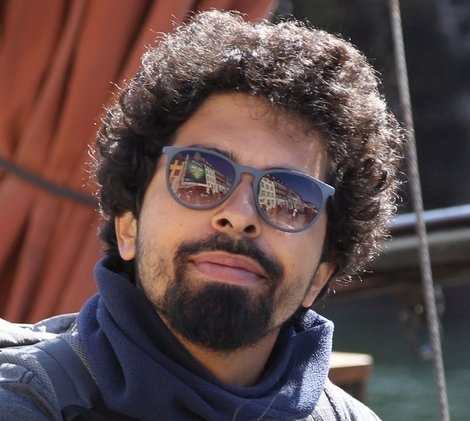OGURO, Aisgo
x
| Room: | GEO building, room 4530 |
| Phone: | +49 421 218-65376 |
| E-mail: | dosanjos@uni-bremen.de |
| Other webpage(s): | Aisgo's institute webpage |
ongoing PhD project:
 Quantification of sediment properties using inverted 2d- multichannel seismoacoustic data sets in shallow water
Quantification of sediment properties using inverted 2d- multichannel seismoacoustic data sets in shallow water
The understanding of the sea floor and the shallow sediments beneath are very important in order to avoid natural disasters generated by geohazards. Some regions are more sensitive than others due to geological features such as: shallow gas accumulations, near surface faults or man-made objects (pipelines). So, to identify such features or zones which can represent a potential risk for human activities or engineering construction are fundamental in order to prevent risks.My PhD project has as primary focus to quantify sediments and/or rock properties of shallow sediments either in shallow or deeper water column.
Usually the conventional approach that has been done is the qualitative interpretation of seismic sections which basically means the identification of seismic stratigraphic features. Besides that I intend to use different methodologies like amplitude vs offset (AVO), acoustic/elastic inversion and full waveform inversion (FWI) that will result in the quantitative interpretation.
In this case quantitative interpretation means to obtain a numerical interpretation of identified seismic stratigraphic features through the combination of physical parameters like: compressional velocity, shear velocity, density, compressional and shear impedance, poisson ratio and others.
To achieve such objectives I intend to use multichannel seismic data (MCS) together with a ‘’well planned’’ amount of ground truth data (boreholes, cores, CPTs). In spatially heterogeneous areas, where a large number of ground truth are required, direct sampling can quickly become time consuming and expensive. This is compounded by unsolved issues regarding the preservation of certain key soil properties (e.g., porosity) during sampling.
So, the seismic data will provide me the spatial resolution necessary to cover huge areas while the ground truth data will be used either as calibration points for the quantification or as ‘blind test’ to validate the process.
Thesis committee:
| Prof. Dr. Volkhard Spieß | University of Bremen |
| Dr. Hanno Keil | University of Bremen |
| Prof. Dr. Tobias Mörz | University of Bremen |
| Prof. Dr. Dirk Gajewski | Univeristy of Hamburg |
| Dr. Lars Zuehlsdorff | Norsar, Lillestrøm, Norway |
